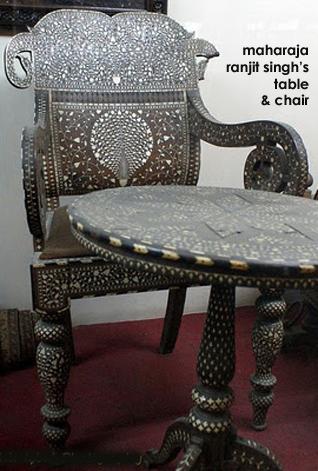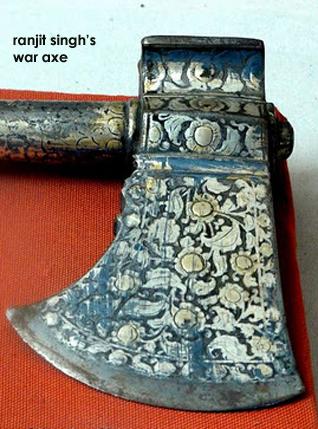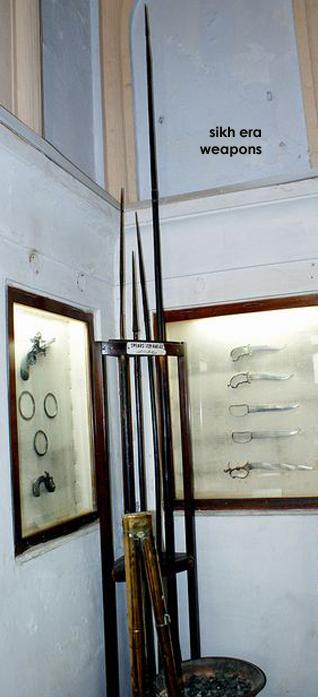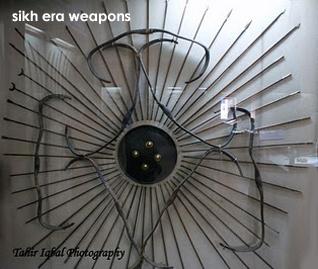History
Sikh Artifacts in The Lahore Museum
by JAHO JALAL, Photos by TAHIR IQBAL
The Lahore Museum is rich in relics from the Sikh Era.
Tahir Iqbal, who has carried out a lot of research on Sikh history, provides us photographs of the Sikh Era relics, which are preserved in the Sikh Gallery of the Lahore Museum.
Edited for sikhchic.com
December 24, 2011
Conversation about this article
1: Sangat Singh (Kuala Lumpur, Malaysia), December 24, 2011, 11:45 PM.
When remembering Maharaja Ranjit Singh, the services of the Fakir Family of Lahore shall always remain in gold letters. In the book, "The Punjab Chiefs" by Sir Lepel Griffin, published in 1865, six members of the Fakir family were entitled to seats as "Durbaris". The most trusted progenitor of his family, Fakir Azizuddin Fahad elected to use the title of 'Fakir' for the sake of humility. The Fakir family were dedicated and loyal to the Sikhs to the very end. On the other extreme, the Dogra Hindus shall always be remembered for their perfidy and treachery.
2: Sunny Grewal (Abbotsfsord, British Columbia, Canada), December 26, 2011, 1:08 PM.
In addition to the betrayal by the treacherous Hindu Dogras, Tej Singh and Lal Singh also proved to be saboteurs by deserting their posts during the fighting.






